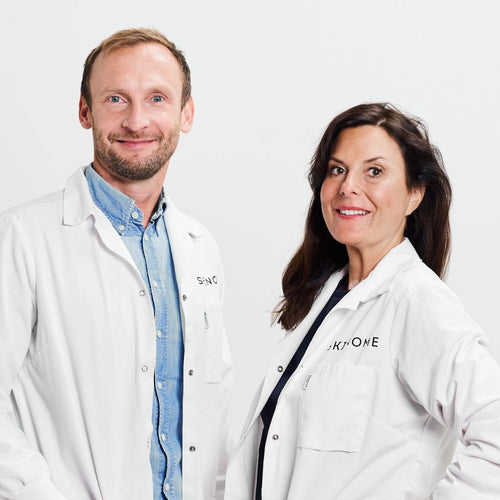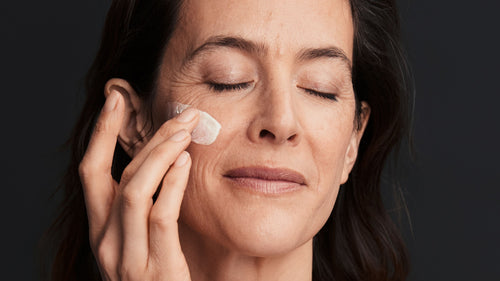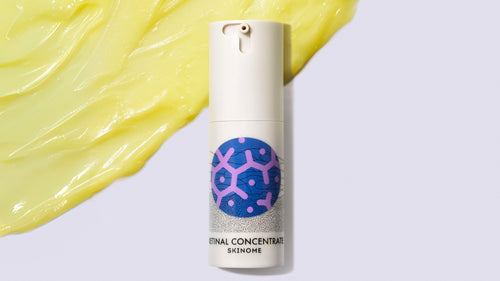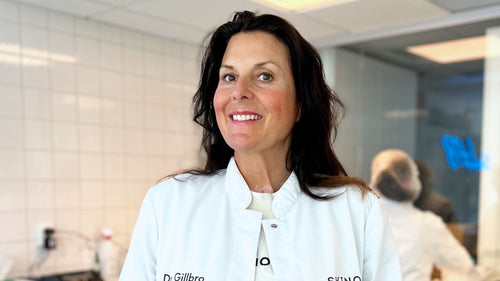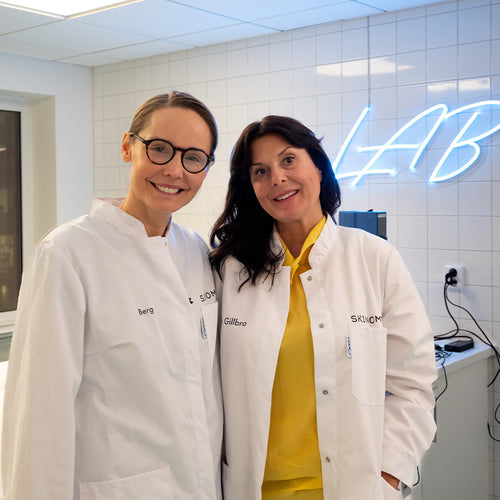Fresh bread contains liquid and molds within a week, in contrast to crisp bread which does not contain liquid and can therefore be stored for a long time without the bread being destroyed by microorganisms.
What are the problems with large amounts of preservatives?
The whole point of preservatives is to kill any bacteria that might get into your skin cream, both from your fingers and from the air. This happens because the preservative destroys the bacterial wall of the bacteria and thus renders it harmless. However, this can also have less good effects on our skin. Several preservatives are associated with skin irritation resulting in burning and sensitivity. There are also others that have an allergenic effect and that can cause contact dermatitis, i.e. inflammation of the skin caused by a substance coming into direct contact with the skin.
Until about 15 years ago, parabens were the most used preservatives. Now it is probably the most blacklisted. In 2004, an attention-grabbing article was published by the researcher Philippa Darbre in England, where the research team had been able to establish that parabens caused faster growth of breast tumor cells than normal. How much parabens are actually absorbed into the bloodstream through the skin has not yet been determined and the study has not been verified, but as the word reached consumers around the world, many skin care manufacturers opted to remove parabens from their products.
Today, phenoxyethanol is by far the most widely used preservative in skin care products (see image). Several studies have shown that phenoxyethanol is linked to contact dermatitis and allergies. Researchers have also shown that phenoxyethanol triggers the same sensitivity receptor as chili peppers, namely trpv1. French authorities have advised against manufacturing products with phenoxyethanol for the diaper area of children under the age of three, but there is no such advice in Sweden.
The other more general problem with preservatives is that they don't tell the difference between bad and good bacteria. In addition to killing any (bad) bacteria that could occur in your skin cream, preservatives can also affect the skin's good bacteria once the cream ends up on the skin. It is because your skin is teeming with bacteria and more and more studies show that our bacteria are significantly more important than we have thought for our skin health. Among other things, several studies have shown that an imbalance in the bacterial flora on the skin can be one of the causes of some of our most common skin conditions such as eczema, acne and rosacea.
A research group in Beijing, China showed that preservatives used in skin care affect the natural skin flora, which in turn can affect our skin health 1-7. Preservatives can thus disrupt a normal skin flora, which can lead to poorer skin health or even skin conditions.
But we don't want our skin cream to mold!
Skinome's entire philosophy is based on developing products for the best of the skin and of course the skin care you buy is free from harmful bacteria and mold. But, the thing is, there are more innovative ways to preserve products instead of using high levels of preservatives. We think the reason no one else is doing what we're doing is because it's just a little more complicated. However, we are convinced that our skin care leads to better skin health and that it is therefore worth the trouble.
In order to exclude additives and preservatives, we have a significantly shorter shelf life on our products. Traditional skin care normally lasts 3 years or longer. Our products only last 12 months. We also cool down our products immediately after production to 8 °C. And we ask you as a customer to store the products in the refrigerator. A little hassle, sure, but you're doing your skin a big favor at the same time.
According to the EU Cosmetics Regulation (EC) No. 1223/2009, there must be no risk of mold/bacterial growth during the period of use and therefore the products are tested at specific institutes. Our products also undergo these tests.
To avoid preservatives, we work with the water content to reduce the risk of growth, among other things. Our night concentrates only contain about 10% water, which together with other substances means that the products are self-preserved.
We also use skin-friendly or skin-friendly ingredients that help minimize the risk of bacterial or mold growth. Zinc is a skin-identical mineral that has a good anti-inflammatory skin effect and also a mild preservative effect. In some products we use a very low dose of caprylyl glycol (Rich Emulsion, Light Emulsion, Sensitive Cleanser).
Caprylyl glycol is not an EU-listed preservative, but has a mild preservative effect. In traditional skin care, this substance is most often used together with listed preservatives. Our use of caprylyl glycol is very low and we have shown in our studies that our products with this low concentration do not disturb the normal skin flora (see below).
There is still relatively little research into how preservatives affect our skin flora, so we have therefore carried out our own studies. If you want to read more about a study we did with Linköping University and Gutfeeling Lab that shows positive effects on the skin after using Skinome's face care, you can find it here .
We are convinced that by limiting additives and focusing on what actually makes the skin feel good, we can contribute to better skin health. We're convinced this is the future of skin care, are you?
References
- Wang Q, Cui S, Zhou L, He K, Song L, Liang H, HC Effect of cosmetic chemical preservatives on resident flora isolated from healthy facial skin. J Cosmet Dermatol. (2018).
- Dréno, B. et al. Microbiome in healthy skin, update for dermatologists. Journal of the European Academy of Dermatology and Venereology (2016) doi:10.1111/jdv.13965.
- Kim, HJ et al. Fragile skin microbiomes in megacities are assembled by a predominantly niche-based process. Sci. Adv. (2018) doi:10.1126/sciadv.1701581.
- Rocha, MA & Bagatin, E. Skin barrier and microbiome in acne. Archives of Dermatological Research (2018) doi:10.1007/s00403-017-1795-3.
- Ganju, P. et al. Microbial community profiling shows dysbiosis in the lesional skin of Vitiligo subjects. Sci. Rope. (2016) doi:10.1038/srep18761.
- Chen, YE & Tsao, H. The skin microbiome: Current perspectives and future challenges. Journal of the American Academy of Dermatology vol. 69 143–155 (2013).
- Kong, HH & Segre, JA Skin microbiome: looking back to move forward. J. Invest. Dermatol. 132, 933–9 (2012).
